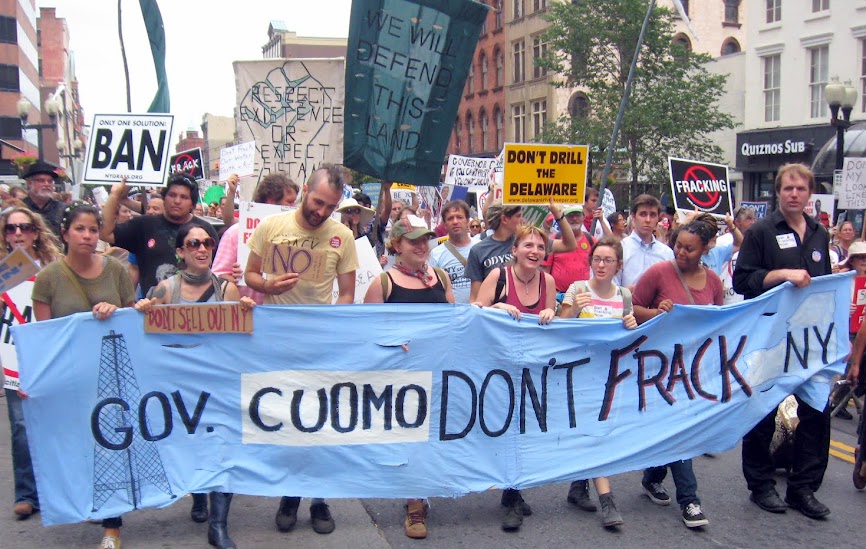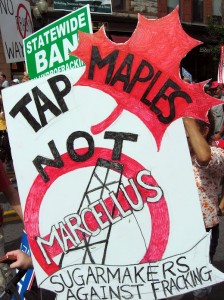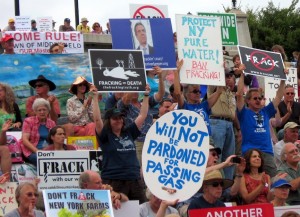
by Cecile Lawrence, Ph.D., J.D.
August 29, 2012
To try to win hearts and minds, people, organizers, governments choose words, phrases and images that resonate with the cause and with the audience. It’s not nearly enough to have facts and figures and science as all of those can be and have been manipulated and corrupted. Framing is done subtly so that people often don’t realize what’s happening unless they’re attuned to it, are probably wordmeisters, and can spot it. It’s a bit like Psy Ops (Psychological Operations). In fact Psy Ops uses framing techniques. We have all been subjected to framing for decades, especially as a political technique to pressure the populace to buy into an act not in their best interest such as “shock and awe” to describe the bombing of Falluja in Iraq, using the word “entitlements” to describe Social Security and Medicare, with the assumption that the recipients are getting something for nothing, are feeding off the state. “Obamacare” is only a more recent version of the practice of framing carried out in the U.S. political scene, especially as it’s much easier to say that word than it is to give the full long title of the bill plus you’re simultaneously giving ownership and blame for it to Obama.
Take the word “fracking.” This is a word invented by opponents to High Volume Hydraulic Fracturing, a word which has been a major success in the fight against fracking. That’s why the pro-drilling people and gas/oil corporations have been trying to neuter it, get rid of it, say it refers only to the frack job itself, try to change the spelling to “frac” by saying you can’t get the word “frack” from the word “fracturing.” As a life-lover AKA anti-fracker, in NEPA (Northeast Pennsylvania) would say “bwah bwah bwah.” The words “frack” and “fracking” and their endless variations have taken off and gone viral. All that those fighting fracking just need to do is to keep emphasizing that fracking means the whole enchilada, as Sandra Steingraber[i] would say, not just the frack job itself alone, a horrendously loud, smelly, noisy apocalyptic scene on a drilling pad which can go on from 10 to 12 days or longer in colder weather. One extended play on the words around this word is found in an article[ii] published on June 17, 2010 by Will Koop, a Canadian anti-fracking activist.[iii] The title is “World’s Biggest Experimental Frack Job!! Fracking 26/7… Fracking All Night Long) A Dubious Honour for British Columbia And, Water In-Frack-tions at 2 Island Lake?” Koop had a field day with the word, making it rhyme here and there as in “fracked crack.” Like Koop, in spite of resistance from those who try to resist the framing whether they’re for or against fracking, lots of people now refer to frack sand trucks as frack sand trucks, not as sow bellies.
Framing requires that you hold onto a successful word or phrase and no matter the push back from the other side, that you stand firm on how you define it. There are even those on the side of preserving and protecting the environment, the life and health of all beings, who in an admirable attempt to respond to the other side reasonably and scientifically, to heed the call for balance, itself an act of framing, are tempted to give in and say we should limit the use of the word “fracking” to the frack job itself. I’m not sure those who give in to this call for balance and clarity realize that those against whom they’re fighting are using this call for balance and clarity as a means to control the discussion and weaken their opposition.
The people in the resistance to high volume hydraulic fracturing as a method of drilling for gas and oil have been working more on coming up with other powerful words and phrases. Chip Northrup’s verbalized phrase for fracking as being a”dirty underground pipe bomb”[iv] is one example where fractivists even came up with cartoons to go with the phrase.
 Creators of lawn signs have come up with a variety of phrases and images, while so far the pro-drilling groups, with the support and funding of the drilling corporations have just “Friends of Natural Gas” which I started calling the FONG sign and people picked up on that. Calling it the FONG sign diminishes its power as now it becomes a meaningless name and even sounds like gong and thus evokes a TV show, a $1 or more tip at a bar, a rock band. The slight problem with FONG is that some might see it as demeaning to people of Chinese origin. Creators of a framing campaign need to be sensitive to when to step back and drop an idea before it starts to stir up things you don’t want stirred up. The debate continues as to whether to compare fracking to the sexual act, as Koop seems to be doing in his article mentioned above, much less rape as some have done in referring to fracking as literally the rape of Mother Earth.
Creators of lawn signs have come up with a variety of phrases and images, while so far the pro-drilling groups, with the support and funding of the drilling corporations have just “Friends of Natural Gas” which I started calling the FONG sign and people picked up on that. Calling it the FONG sign diminishes its power as now it becomes a meaningless name and even sounds like gong and thus evokes a TV show, a $1 or more tip at a bar, a rock band. The slight problem with FONG is that some might see it as demeaning to people of Chinese origin. Creators of a framing campaign need to be sensitive to when to step back and drop an idea before it starts to stir up things you don’t want stirred up. The debate continues as to whether to compare fracking to the sexual act, as Koop seems to be doing in his article mentioned above, much less rape as some have done in referring to fracking as literally the rape of Mother Earth.
Those resisting the fracking invasion from entering New York State started out with lawn signs that include the now iconic red circle with a line across it over white letters on a black background NO Frack image[v], along with “They said it would be safe to drill in the Gulf,” “Statewide Ban,” Clean Air and Water,” “No Fracking Way” and even “Are you Fracking Crazy?” this last being admittedly one of my favorites. Regarding Friends of Clean Air and Water,” it’s a fascinating psychological display in that this most neutral of the resistance to drilling signs is the only one that pro-frackers have taken and tried to convert into a pro-fracking sign by sticking their own pro-drilling statement or organization over the name of the original grassroots organization that created this sign which itself was in response to the FONG sign and an attempt to neutralize that sign. The wording and imagery of resistance to drilling has grown into a tsunami of creativity not matched by those in favor of fracking.
The challenge is to come up with images, words, phrases that neuter and weaken the ideas of the other side while avoiding the understandable impetus to insult them. Framing is a subtle skill and it takes time to develop winning words, phrases and images unless you get lucky like with frack, fracking, frack sand, fracking crazy, fracker, fractivist, and on and on.
People who are against fracking could/should put themselves in the shoes of various types of pro-frackers. Think of it like an ad campaign, which it is. For example, there’s a collection of images, cartoons on the Gasland Facebook site that fans uploaded. Many of them are very clever, varying from very subtle to in-your-face. For example “Gashole” got an audience chuckle when I showed it at a Left Forum slide presentation. The images with gas masks on the faces of people, animals, the pitchfork couple could become iconic with a little development. Maybe the artist could put up a drilling rig in the background so as to make it clear what the image means.
That’s another issue: clarity of message. Framers need to try hard to avoid any confusion or misinterpretation or potential for misrepresentation. That’s why the Clean Air/Clean Water lawn sign is a weak sign even though they’re a few people who have them on their front yards when they could have had a stronger sign. Know your audience. The Broome and Tioga Counties area of upstate New York has been long influenced by the presence and in some cases, patriarchy, of the Endicott-Johnson shoe corporation, IBM, Lockheed Martin, GE, Link Simulator and others, leading employees and thus residents to not complain about corporations and to even defend them while they poison or kill you. Witness the still existing plume from the contamination of the aquifer by IBM underneath residences, shops and restaurants in the village of Endicott.
In encouraging more people to get engaged with this fascinating topic of framing, suggest that they come up with one powerful phrase that does not blatantly insult, that has some sympathy to it for the pro-frackers but clearly states that freaking fracking is a disaster without using those exact words, but which back away some from the in-your-face nature of “freaking fracking is a disaster.” Green Party members and candidates would gain from getting more information about this fascinating topic of framing and getting comfortable in using it in campaigns and general messaging. Framing is not a bad thing. It becomes manipulative only when the intention behind it is to do harm. So one’s intention is crucially important.
 I’m writing this three days after the major and largest rally and march against fracking ever held in NYS so far took place on Monday, August 27 in Albany, NY, the state’s capital. The creativity and imagery took a major leap forward there[vi]. That there were at least 1200 participants must have played a major role in that expansion of visual framing. In Syracuse, NY, just four days before that Monday event, at least 200 activists greeted Governor Cuomo as he came to open the annual state fair, which promotes NYS agriculture, dairies, wineries, and breweries. The visual imagery there was gentle, promoting the beauty of New York, its iconic song “I love New York, Don’t frack New York” being one of the themes. Those umbrellas came in really handy on a hot sunny day. One activist against fracking took this threat to heart, as he commented to the videographer “No water, no beer.”[vii] That was a lovely brief example of the importance of touching people with what’s important to them when you’re engaging in framing and messaging.
I’m writing this three days after the major and largest rally and march against fracking ever held in NYS so far took place on Monday, August 27 in Albany, NY, the state’s capital. The creativity and imagery took a major leap forward there[vi]. That there were at least 1200 participants must have played a major role in that expansion of visual framing. In Syracuse, NY, just four days before that Monday event, at least 200 activists greeted Governor Cuomo as he came to open the annual state fair, which promotes NYS agriculture, dairies, wineries, and breweries. The visual imagery there was gentle, promoting the beauty of New York, its iconic song “I love New York, Don’t frack New York” being one of the themes. Those umbrellas came in really handy on a hot sunny day. One activist against fracking took this threat to heart, as he commented to the videographer “No water, no beer.”[vii] That was a lovely brief example of the importance of touching people with what’s important to them when you’re engaging in framing and messaging.
[i] http://www.orionmagazine.org/index.php/articles/article/5839/
[ii] THE WORLD’S BIGGEST EXPERIMENTAL FRACK JOB – Bctwa.org
www.bctwa.org/FrkBC-Apache-BiggestFrack.pdf
THE WORLD’S BIGGEST EXPERIMENTAL FRACK JOB! .. By Will Koop, June 17, 2010.
[iii] http://www.straight.com/article-292828/vancouver/activist-wants-bc-ban-fracking
[iv] http://vimeo.com/14295502#at=0
[vi] http://www.huffingtonpost.com/2012/08/28/fracking-opponents-rally-new-york-cuomo_n_1836087.html?utm_hp_ref=new-york&ir=New%20York,
http://grist.org/news/new-yorks-fracking-war-activists-rally-in-albany-bloomberg-tries-to-make-fracking-cleaner/
[vii] http://youtu.be/N5tXIrL_uhk
photographs by Mark Dunlea

Excellent exploration of the power in words, Cecile! It is my belief that framing can be and is a more powerful tool that just working with the facts in an argument that has become highly politicized. This article opens our thinking like an inhaler opens the air passages of an asthma sufferer. This is opening my thinking as to how this public debate is won more on the emotional level than on a logical one. The concept of public debate on this issue of fracking is even more clear now as not even a debate. How can one debate the value of a mugging, a rape or torture, let alone the fracking of our neighbors, mother earth or children and mother’s. What is often termed public debate shouldn’t even be one when people and the environment are being harmed. Thank you Cecile!
I think that you are onto something here. In order to build on the framing, it has to be tied to values or a moral philosophy here. Lakof, Weston, Nunberg and Strong all have researched and written about this. The essence is to keep it simple and short, tie it to values, repeat it ad nauseum and stay on message.
It is important not to use the drillers framing or be on the defensive. Keep it original and personal. You must believe in your message and be able to speak to it quickly and succinctly.
A thought-provoking article. I’m finding that the non-partisan nature of this movement is a great asset. No attempt to brand us “Democrat”, “anti-Tea Party” sticks, and thus the argument stays about the outrageous facts!
And thanks so much for Will Koop’s “The World’s Biggest Experimental Frack Job!!” – a trove of detailed information, and also a warning about frackers’ tricks regarding voluntary water withdrawal metering. A great piece of ammo about relying on industry honesty!